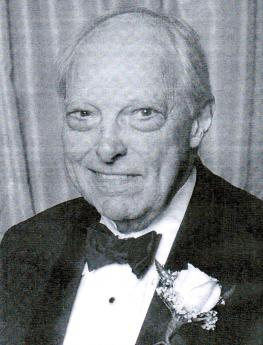Related Topics
In Memoriam
Charles Peterson
Lewis B, Flinn, M.D.Wilton A. Doane,MD
Henry Cadbury
Martin Orne, MD, PhDGeorge W. Gowen, MD
Kenneth Gordon, MD
Mary Stuart Fisher, MDOrville P. Horwitz,MD
Lewis Harlow van Dusen, Jr.
Hobart Reiman, MD.
Lindley B. Reagan, M.D.
Allan v. Heely
Frederick Mason Jones, Jr.
Russell Roth,MD
George Willoughby
Earle B. Twitchell
Jonathan Evans Rhoads, Sr.
Garfield G. Duncan,MD
Hastings Griffin
Joseph P. Nicholson
Howard LewisAl DriscollHenry Bockus, MD
Mary Dunn
William H. Taylor
Abraham Rosenthal
Robert J. Gill M.D.

|
| Robert J. Gill M.D. |
That was not exactly how things turned out, however. The deans and other officers of medical schools had also spent the war years contemplating the future. They were strongly imbued with the German way of doing things, prosylitized by the non-physician rainmaker Abe Flexner into believing that medicine should be run by teaching hospitals, strongly oriented to a hierarchical faculty, not a communal one. (A relative of Abe's, Simon Flexner, was pathologist at the Pennsylvania Hospital, and there may be some family history we do not now know about.) We didn't completely understand it, but it was town vs. gown -- medical school faculty vs. the practicing community--for control, It was to go on for the next fifty years, as government research money was increasingly used as a lever of control over medical schools, then hospitals, then medical societies. It was the underlying reason William Osler left America for England since he strongly preached that a man should be a doctor before he became a specialist. And, that to practice without books was to sail an uncharted sea, but to read books without practicing was never to go to sea at all, as he once told them in Boston. Osler wrote his own epitaph, "Here lies the man who took the students into the wards." The American Medical Association was dominated for many decades by the Pennsylvania Hospital model, but eventually academic physicians formed their own societies, and eventually many of them left the Association entirely, trying very hard to give the impression that a"real" teaching doctor wouldn't belong to the AMA, the AMA was nothing but a guildhall of monopolists, and similar things which were only vaguely true, but no truer for one segment than another. In 1948, sixty five percent of hospital beds in Philadelphia were in charity wards, and the doctors and nurses were universally unpaid. Medical schools couldn't function without the unpaid services of doctors who donated their services, So the teaching hospitals set about to get government money, and ultimately to have all doctors paid with government money, a system invented and promoted by Vannevar Bush. It took most of a century, but money was power, and such power was to be got by controlling funds, not by making rounds on the wards.
It distorts matters to imply academic physicians didn't care for their patient's welfare, because most of them certainly did. But the administrative professions cared a great deal less and generally controlled administrative matters. It became common for doctors to make sneering remarks about administrators, especially after administrators began to pay themselves handsomely, but their cars were almost always seen pouring out of the hospital garages at 5 PM, and physical activity was encouraged to follow the same patterns. Hospitals grew more and more like corporations, and less and less like religious shrines. More and more a doctor was judged by his income, not his dedication. It was quite true that government money funded research, and research added thirty years to public life expectancy. It was not so pleasant to see the affection of the public souring while our competence greatly improved. To some extent this was inevitable, and to some extent, it was a power play, hard to say how much was dominant. But it is easy to see who won.
The Pennsylvania Hospital continued its two-year unpaid program for about five years and then was forced to become a one-year program with a nominal salary. After a couple of decades, it discarded many of the features of a rotating internship, gradually forced to describe its program as a first-year residency, as specialty became the norm, not the family doctor. My grandson is paid over fifty thousand dollars a year to do what Bob Gill and I did for charity for five or six years. The government has been persuaded to arrange things so that a medical student graduates a couple hundred thousand dollars in debt, and pays it back out of his later salary. Most interns are pretty defensive about their pseudo affluence, noticing how it is accomplished, and powerless to resist.
Bob Gill never got any of this money and grew to a position of general esteem and affluence. For his funeral, I made thirty-five calls to organizations where he was a member and often a trustee or officer. Quite frequently the person who answered the phone remarked that Bob had originally suggested that person for membership. He was a central figure in the renaissance of Philadelphia, and a leader in the literary, historical and charitable communities of his home town. Christ Church was packed with people who wanted to honor him. Along with me, who shared medical offices with him for almost three decades.
Originally published: Monday, July 31, 2017; most-recently modified: Tuesday, June 04, 2019
| Posted by: Bruce C Gill | Nov 17, 2018 4:17 PM |